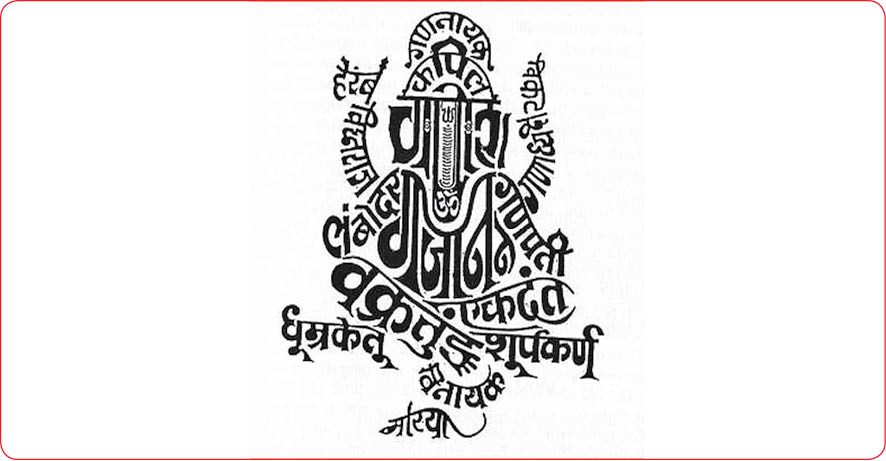Lord Ganesha is invoked before commencing anything significant and it is for this reason that he is called the ‘Lord of Beginnings’. He is also known as Vighnaharta or remover of obstacles. The concept of Vighnaharta or remover of obstacles resonates with the Zoroastrian concept of Verethragna or victorious (in overcoming difficulties, foes or enemies).
What Vighnaharta Ganesha is to devout Hindus, Verethragna Bahram Yazata is to devout Zoroastrians. The Bahram Yasht enumerates ten forms in which the divinity (Bahram Yazata) appears: As a swift wind, as an armed warrior and as an adolescent youth. In the remaining seven form he appears as a bull with horns of gold, a white horse with ears and a muzzle of gold, a camel, a boar, a bird of prey, a ram and a wild goat.
These forms are symbolic attributes of our own Bahram Yazata, who can be swift and cleansing as the wind, powerful and valiant as a warrior, energetic like a youth, strong as a bull etc. It is said that Verethragna Bahram Yazata comes to the aid of a devotee in any one or more of these ten forms and removes obstacles.
Ganesha in turn has eight forms having different attributes. All the eight forms of Ganesha symbolize certain abstract qualities:
- Vakratunda is the first form of Lord Ganesha. Vakratunda means the twisted trunk. The purpose of this incarnation was to destroy the demon named Matsaryasura which symbolically represents envy in humans. Hence, this form celebrates Ganesha’s triumph over envy. The mount of this form is a lion.
- Ekadanta means single tusk. This form was born to kill the demon Madasura who represents intemperance among humans due to power and other vices. Ekadanta was born to triumph over intoxication emanating from power and pelf in humans. The mount of this form is a mouse.
- Mahodara symbolizes a big belly. This incarnation killed the demon of delusion known as Mohasura. This form is also known to destroy ignorance and negative thoughts. The mount of this form is also a mouse.
- Gajanana means the elephant faced. This form is said to have slain the demon of greed. The mount of this form too is a mouse.
- Lambodara means potbellied and in this form Ganesha destroyed Krodha or the demon of anger. The mount of this form is also a mouse.
- Vikata means unusual shaped. The purpose of this form of Ganesha was to destroy the demon of lust. The mount of this form is a peacock.
- Vighnaraja This incarnation of Ganesha destroyed Mama or the demon of ego. Vighnaraja means the remover of all obstacles. His mount is a serpent named Sesha.
- Dhumravarna means smoke coloured and the purpose of this form was to overcome the demon of arrogance, Abhimanasura. The mount of this form is also a mouse.
Just like Ganesha, Bahram Yazad presides over success, victory and triumph, over external foes, as also over internal weaknesses and vices. Both bestows courage and confidence to persons embarking on any new journey or initiative. Just like Ganesha, Bahram Yazata is also known by his appellations e.g. Fattehmand, Firuzgar and Dushman Zadaar which mean victorious and destroyer of enemies.
The name Bahram comes from the Avestan term Verethraghna which means success or victory. Avestan Verethraghna is similar to the Sanskrit term Shatrughna or destroyer of enemies.
Just as Ganesha is Vighna-harta or destroyer of obstacles, so is Bahram Yazata Dushman Zadaar. Just as Ganesh or Ganesha is a very popular name among Indian boys, Bahram is a very popular name among Iranian boys. During the Sasanian Empire, there were at least five emperors by the name Bahram.
Lord Ganesha is not only worshiped by Hindus, but, by Buddhists too. In Buddhism, Ganesha is referred to as Vinayaka (Master / Leader) and is worshiped in countries like Tibet, China, and Japan. His wisdom, knowledge, and ideologies are revered by devotees all over the world.
As Parsi Zoroastrians, we are worshippers of Ahura Mazda, the Lord of Wisdom, and in that same spirit of wisdom, we bow in respect and reverence to all that Ganesha embodies in terms of wisdom and removing obstacles!
- In Search Of The Soul - 5 April2025
- Why Pray In A Language We Do Not Understand? - 29 March2025
- Celebrate Nature’s New Year With Purity And Piety of Ava - 22 March2025
